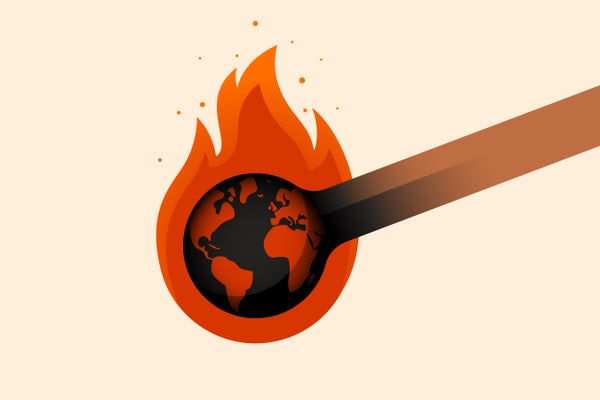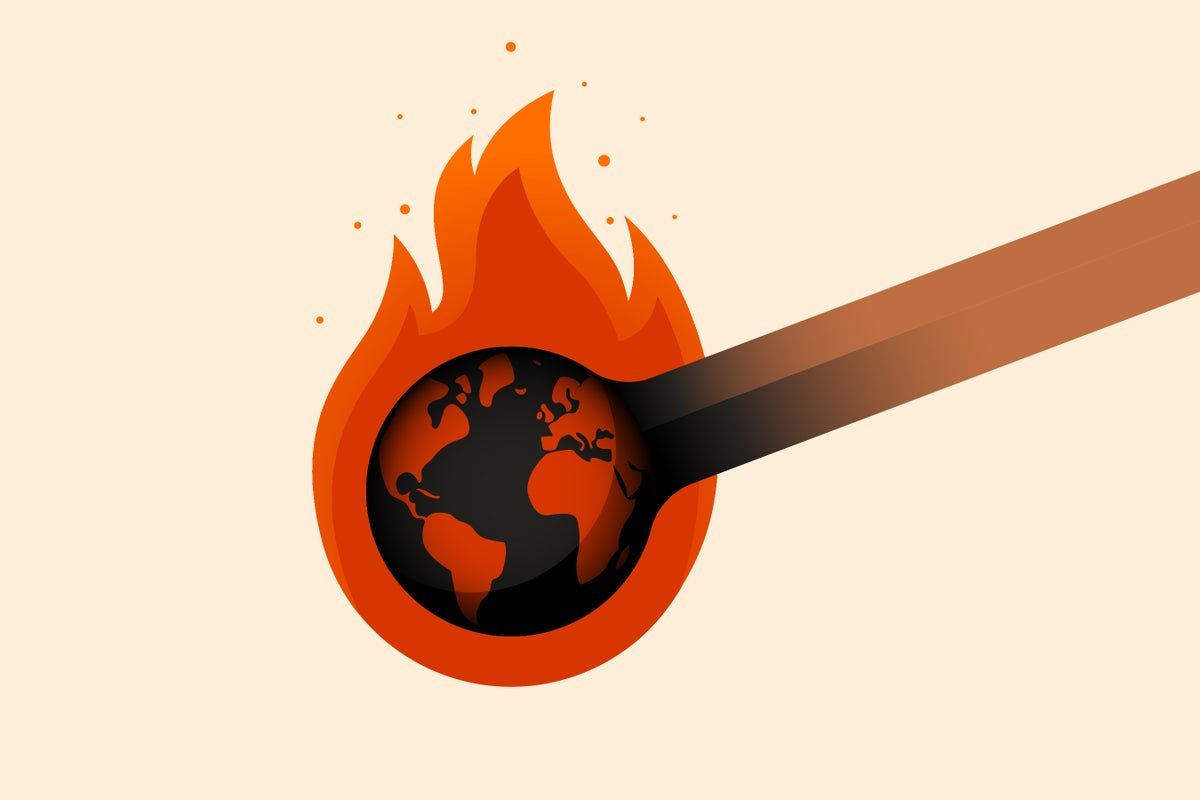October 25, 2024
3 min read
Climate Goal “Will Be Dead Within a Few Years” Unless World Acts, UN Warns
The world is well on track to blow past a goal of limiting global warming to 1.5 degrees Celsius that many countries have put at the center of their climate efforts

Mykyta Ivanov/Getty Images
CLIMATEWIRE | The world is well on track to blow past a goal many countries have enshrined as the beating heart of global climate efforts: 1.5 degrees Celsius.
If current trends continue, “there is virtually no chance” of limiting global warming over the past 170 years to 1.5 degrees, according to the latest emissions gap report from the United Nations Environment Programme (UNEP). Even in the most optimistic scenarios, where all countries deliver on their emission-cutting pledges, “there remains about a 3-in-4 chance that warming will exceed 1.5C,” it adds.
That temperature target has become the guidepost that countries use to craft their national climate plans. Efforts to cut climate pollution and build resilience are measured against it. Keeping it alive has become a rallying cry at consecutive global climate conferences among activists and officials.
On supporting science journalism
If you’re enjoying this article, consider supporting our award-winning journalism by subscribing. By purchasing a subscription you are helping to ensure the future of impactful stories about the discoveries and ideas shaping our world today.
But there’s been increasing pushback among some in the scientific community about the feasibility of that target since it would require immediate action in all countries and sectors and a massive scaling up of technology without delays or exorbitant costs.
“Even if this was even feasible to imagine, getting that to happen within the legal frameworks of countries is going to slow things down, not to mention if the population is not behind such changes,” Glen Peters, a senior researcher at the Centre for International Climate Research in Norway, said in an email. Peters was note involved with the U.N. report.
The UNEP report assesses the yawning divide between the growth in global greenhouse gas emissions under countries’ current commitments and where they should be to limit global warming to 1.5 degrees. It finds that the policies in place today would lead to 2.6 to 3.1 degrees Celsius of warming.
The world has already warmed by an estimated 1.3 degrees, and at the current rate of warming, the 1.5-degree target would be reached in less than 10 years, the report says.
Early next year, countries are expected to submit stronger plans to the U.N. for how they plan to meet their obligations to the Paris Agreement, a deal aimed at holding warming “well below” 2 degrees while “pursuing efforts” to limit it to 1.5 degrees. Thursday’s report outlines what’s needed keep warming as close to 1.5 degrees as possible.
In short, nations must not only meet their current pledges for 2030 — which many are failing to do — but go beyond them and then submit even more ambitious plans for 2035.
Even if countries fully implemented their most ambitious pledges, the report estimates that emissions would fall just 10 percent in 2030 compared to 2019 levels. That’s far short of the 42 percent decline need to remain aligned with the 1.5-degree target, the report says.
Inger Andersen, the head of UNEP, declared in the forward to Thursday’s report that without delivering a massive uptick in action, the 1.5-degree target “will be dead within a few years.”
“Basically, 1.5C with overshoot requires an overconfidence in what the world can do,” said Peters, referring to the idea that the world could surpass 1.5 and bring global temperatures back down again. “There is an overconfidence in things happening immediately and a global scale.”
A coalition of scientists and academics launched protests demanding action in 2022 when the U.N.’s Intergovernmental Panel on Climate Change declared that time was running out to hold warming to relatively safe levels. Since then, things have not gotten better. Record heat waves have occurred in oceans and on land this year, and extreme flooding and drought have devastated communities from Brazil to Sudan.
Maintaining the 1.5-degree target can make it hard for people to understand the scale of the problem, some scientists argue. But giving up on it could also lead to complacency at a time when countries need to be doing more, not less.
“Scientifically speaking, it will be a while before we can categorically say that we will have exceeded 1.5,” said Joeri Rogelj, director of research at the Grantham Institute at Imperial College London and a lead author of the UNEP report.
But that doesn’t make pursuing it invalid, he said.
“We want to keep warming as close as possible to 1.5,” said Rogelj. “The only way that we can do this is by reducing our emissions in the near term.”
Reprinted from E&E News with permission from POLITICO, LLC. Copyright 2024. E&E News provides essential news for energy and environment professionals.













Leave a Reply